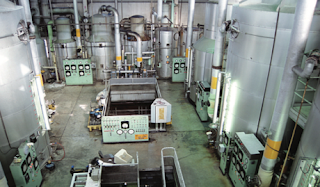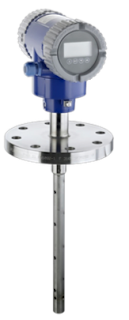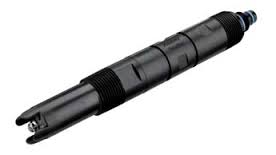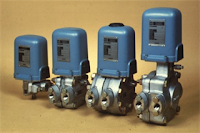 |
| Molasses Production at Sugar Mill |
A
sugar mill typically loses between one and two percent of its incoming sucrose to factors such as poor clarification, sugar crystal elongation, reduced crystal growth rates, filter cake loss, and loss to molasses. Of these, loss to molasses is most significant — and one of the most difficult to prevent. Loss to molasses results from inaccurate flow measurement that causes more than the required amount of sucrose to pass into the molasses recipe. Wasting valuable sucrose can directly affect profitability of molasses batch yields, so new strategies to control this loss are constantly being investigated.
Improved control begins with a reliable measurement of molasses production, but getting that is indeed a challenge. Estimating undetermined sugar loss to within 0.1 percent, for example, requires molasses loss measurement that is accurate to at least one percent.
There are a number of methods that have been employed to measure molasses quantities in sugar mills around the world, each with distinct advantages and limitations.
Measuring storage tank levels on a regular basis is probably the simplest method, but readings are inconsistent and unreliable. The error in the mass estimate affects the undetermined loss directly. Further complicating accuracy are chemical reactions that produce carbon dioxide, which affects both density and tank levels.
Another method is production tank dipping, which involves detecting changes in ow based on changes in torque at various measurement points. While this may be adequate for reporting on a volume basis, most molasses production balance is based on mass. Also, molasses is usually aerated, which creates two-phase flow conditions, further compromising density and accuracy.
 |
| Foxboro Coriolis Flowmeter |
Engineers at this sugar mill
compared measurements made by tank dipping and batch weighing to conventional and digital Coriolis measurements at various points over a three-year period. Years earlier, they installed a competitor’s conventional Coriolis meter. Shortly after, they installed a
Foxboro CFT50 digital Coriolis transmitter from Foxboro in series with the existing unit. The Foxboro meter uses digital flowtube control that overcomes flow interruption or stalling caused by two-phase flow. And finally, a short time later, as a benchmark for accuracy, they installed a set of molasses batch scales. Valve leaks notwithstanding, they
assumed that the scales would provide the most faithful measure of flow.
The measurements from tank dipping were ten to fifteen percent lower than estimates obtained from either of the Coriolis meters tested.
Later, with the batch scales installed, both Coriolis meters recorded consistently higher estimates than the scales readings. On average, the Foxboro meter gave readings that were three percent higher, and the conventional meter read nine percent higher.
It was
clear that the Coriolis meters followed the batch scales much more closely. This strongly indicates the unreliability of tank dipping measurements and suggests that the Coriolis meters are also more responsive to real changes in flow rate. An unanticipated result also indicated that the digital Coriolis meter might be the most responsive to sudden changes in flow rate.
While acknowledging the need for additional study, the researchers
concluded that Coriolis measurement is the only suitable alternative to batch scales for measuring sucrose loss to molasses. They found that the conventional Coriolis meter tended to estimate higher than the Foxboro Coriolis meter and that the Foxboro meter had a significantly faster response time in on/off applications.







